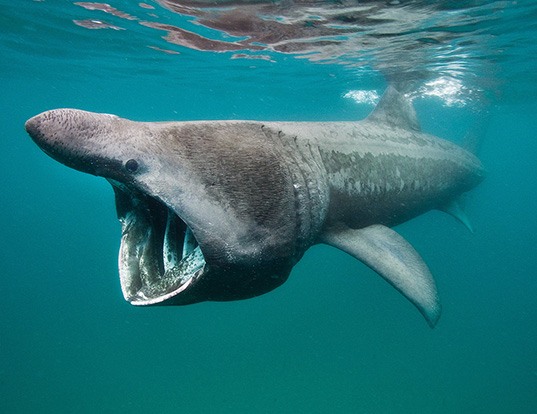By all rights, we wouldn’t have faulted Hyundai for giving up on the Veloster. Even after the manufacturer added an optional turbocharged engine partway through the model run, the original Veloster failed to make much of an impact on the enthusiast world. Have you seen many at autocrosses, track days and club races? Exactly.
Another nail that should have sealed the Veloster’s asymmetrical coffin: The market has largely shifted from sporty driver’s cars to trucklike things. Even Ford announced plans to all but abandon the segment.
But for the 2019 model year, Hyundai is giving us an all-new Veloster, the brand’s budget-friendly, fun-to-drive hot hatch. It’s like the Reagan years all over again.
That original 1983 Rabbit GTI wasn’t the first hot hatch, but most of us can now agree that it made the biggest impact. It also wasn’t the fastest car available that year, but its engine and chassis both punched above their weight class. The GTI’s hatchback offered some utility, while the $7995 price was attractive.
In today’s dollars, that’s about $20,111. What does a new GTI retail for these days? At least $26,415. The Golf R, Volkswagen’s super-duper hot hatch, starts a few bucks south of $40,000.
How much for the Veloster Turbo R-Spec, one that gets the turbocharged engine, six-speed manual transmission and Michelin Pilot Sport 4 tires? MSRP is $22,900, and there are no options available—not even a sunroof. That’s $1400 less than the summer tire-equipped Honda Civic Si, which has always come with a glass sunroof.
The Fiesta ST starts out at just $21,285, but there’s one small problem: Ford recently said that the Fiesta and Focus will soon be leaving U.S. dealerships. Boo.
The standard Veloster receives the company’s non-turbo, 2.0-liter engine. It’s expected to make 147 horsepower, which is fine for 1992. The upmarket choice is Hyundai’s 1.6-liter Gamma engine: 201 horsepower, 195 lb.-ft. of torque, and an over-boost function ups that second figure to 202 lb.-ft. under max acceleration. Those numbers place the Veloster squarely in competition with the Civic Si and Fiesta ST.

That turbo engine comes in three Veloster flavors: R-Spec, Turbo and Turbo Ultimate models. Where the R-Spec is the down-and-dirty, enthusiast-focused model, the other two add niceties like power sunroof, head-up display, leather seating surfaces, navigation system and wireless charging pad.
More big news: The torsion beam suspension found in the original Veloster is no more, replaced by a multi-link setup.
Limited-slip differential? We knew you’d ask, and so did we. Like the Fiesta ST, the Veloster Turbo R-Spec doesn’t get one. The Civic Si does, but again, that car costs a few bucks more.
Instead of a limit-slip, the Veloster gets something called Torque Vectoring Control–call it an e-diff if you’d like. “TVC uses wheel-speed sensors coupled with ESC algorithms to apply precise braking force to the inside front wheel during spirited cornering,” the Hyundai release explains. “This active braking redirects power to the outside-front wheel in the turn, reducing wheelspin for enhanced cornering grip and corner-exit acceleration.”
What else? Like the original Veloster, the new one still features one door on the driver side and two on the other. Business up front and party in the back? Sure, that kinda works for us. Like the Mazda RX-8 and the old Saturn SC2, this one injects some practicality into what is usually a slightly cramped package. You can also say that adds some personality. The rear hatch, of course, returns.

Okay, driving impressions. During the press intro, we got in about 40 miles with the Turbo R-Spec through the hill country in and around Austin, Texas. Sorry, no track or autocross time.
Still, our findings: really, really good seats. They weren’t flat, nor did they feature a ludicrous amount of bolstering. (We’re looking at you, Nismo Juke.) In fact, everything we touched—including the steering wheel, pedals and factory-installed B&M shifter—had a nice heft to it. Heel-toe downshifts are easy, while the steering wheel isn’t too thin or too fat.
Know what you’ll find just aft of that B&M shifter? A real handbrake–like one that operates a cable, not a robot.
The interior itself looks attractive, and it feels good. Despite the price, it’s not a cheap-o economy car interior. It’s nicely trimmed, too. Hyundai could have left everything in raw plastic, and most people probably wouldn’t have noticed. Up by the rear-view mirror there’s a little fold-out pod for your glasses. Even the glovebox is roomy.
In fact, the Veloster recalls another past favorite of the hot-hatch wars: the Honda CRX. Like the CRX, the Veloster’s interior feels larger than its exterior dimensions let on. Put two big people up front, for example, and they’re not knocking shoulders.
Forward visibility is good, but it’s less than good toward the rear. That rear window is small, and the rear headrests do encroach. If we’re not carrying around any passengers, we’d stow those headrests, in fact.
Even with three people in the car–yeah, welcome to the world of media ride-and-drives–performance is what we’d call well within the norms for this class. It’s not a Type R-killer, but it’s a worthy member of today’s 200-horsepower club. The chassis feels capable and stable, two things we like in a car. It didn’t push like a pig, and it didn’t do anything weird. The ride feels firm but not punishing. We see some real potential here.
How much potential? We’re going to assume that, like the original turbocharged Veloster, this one winds up in the SCCA’s H Street autocross class. At 2833 pounds, the Veloster carries around about a hundred pounds more than the Fiesta ST yet sits more than 2 inches shorter.
Could be a close fight. How close? We’re looking at tires for the Veloster right now. While the stock size is 225/45R18, the BFGoodrich G-Force Rival S 1.5 in a 245/40R18 may be the hot tip. It adds seven-tenths to the overall diameter, along with nearly an inch and a half of tread width.
We may have to order a set. Color us very intrigued—just as we were after our first drive with the Subaru BRZ, Mazda MX-5 and Focus RS.
Soon, hopefully, we’ll get some more time with this one.
Comments
Even though you only got 40 street miles in, what was your overall impression of chassis tuning? I'm a huge Hyundai/Kia fan...maybe not as big as Bob, but I've owned several and have been very happy with all of them. I thought my '13 Elantra was a wonderful commuter car...except...it had some pretty poor chassis tuning. It crashed harder over bumps than my NC Miata did (or my current G37 does), yet had significant body roll and the rear would step out in a mid-corner bump.
I love Hyundai/Kia because they represent a hell of a bargain, dead nuts reliability, loaded with options at a great price. This is even more true when you buy one that's 2-3 years old since they depreciate like wild. But the chassis tuning kept me from seriously considering the Genesis sedan when I was shopping for a RWD sports sedan a few months ago. I could live with the wonky tune for an econobox like the Elantra, but wanted something better for a fun-to-drive car. I did get to run the little autox course Kia set up for the Stinger at SEMA last fall and was impressed, so I'm optimistic for the future.
wspohn
Dork
5/21/18 11:27 a.m.
Nice package but why do they make them look like a basking shark?


After our (disastrous) experience with the Sonata, I'd sooner take my chances with a VW!
It still has too many/few doors.

I swore off Hyundais after the last one we had (it was an epic turd), and I've heard a lot of bad things about the last Veloster, but for some reason this one has my interest piqued. The switch to a multi-link out back is a big improvement, and I'm even liking the styling. I'll definitely toss this in the ring when it comes time to replace my current daily driver.
aw614
New Reader
5/21/18 11:42 a.m.
I really wish we got the i30 n over the veloster...
Suprf1y
PowerDork
5/21/18 11:45 a.m.
It's too bad because it really is an ugly car.
Could be a close fight. How close? We’re looking at tires for the Veloster right now. While the stock size is 225/45R18, the BFGoodrich G-Force Rival S 1.5 in a 245/40R18 may be the hot tip
Did they finally switch to an 18x8 rim, or are you just gonna smush the Rival onto it's 18x7.5? otherwise I've got the hot tip on low offset 18x8's with the correct centerbore 
The turbo cars get an 18x7.5-inch wheel. Pete from BFG is our secret guest for this week's live show, so I'm sure we'll chat.
"Hyundai’s 1.4-liter Gamma engine"
I thought that was a 1.6 liter?
specs
Displaying 1-10 of 71 commentsView all comments on the GRM forums
You'll need to log in to post.









































